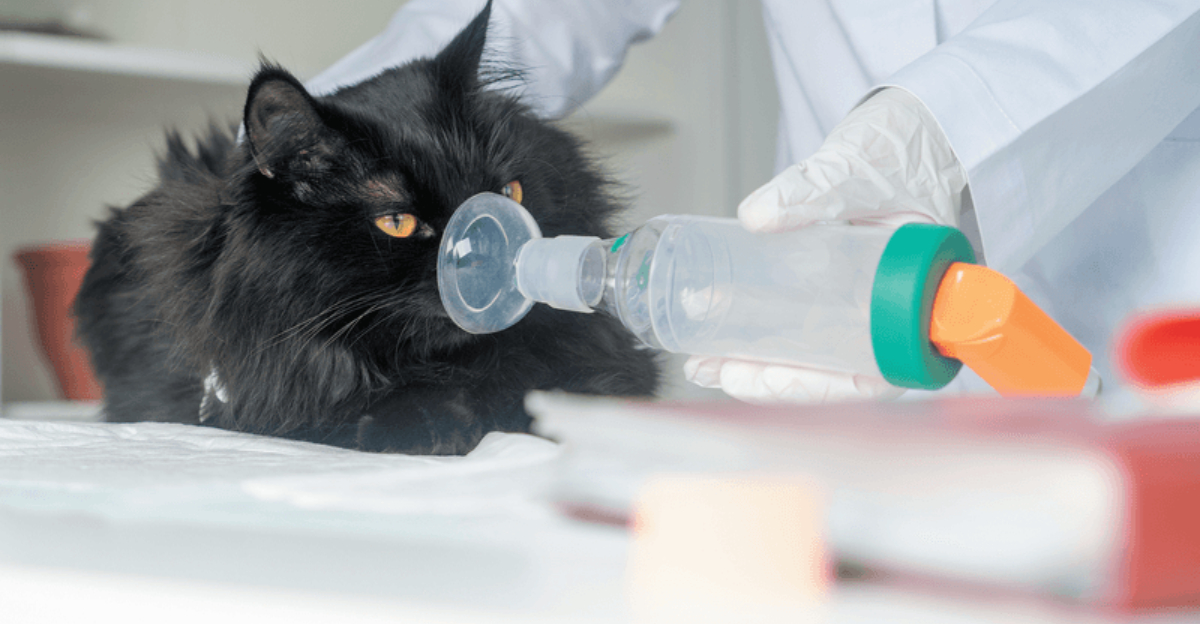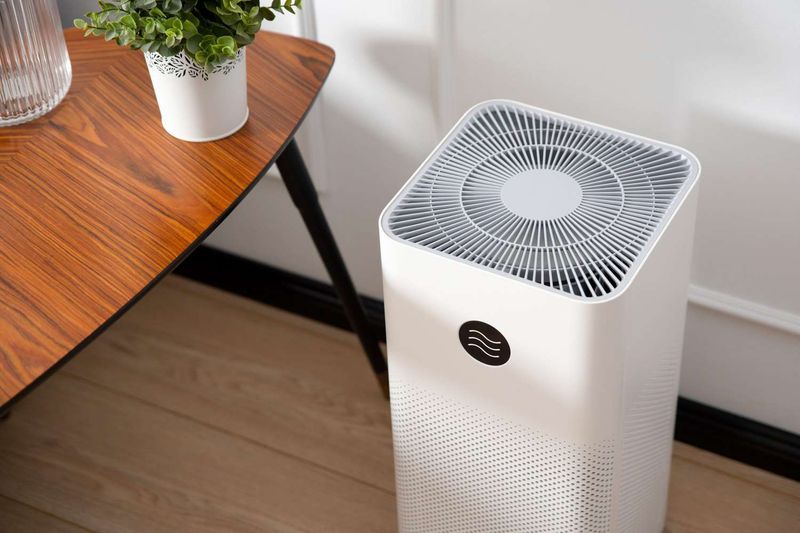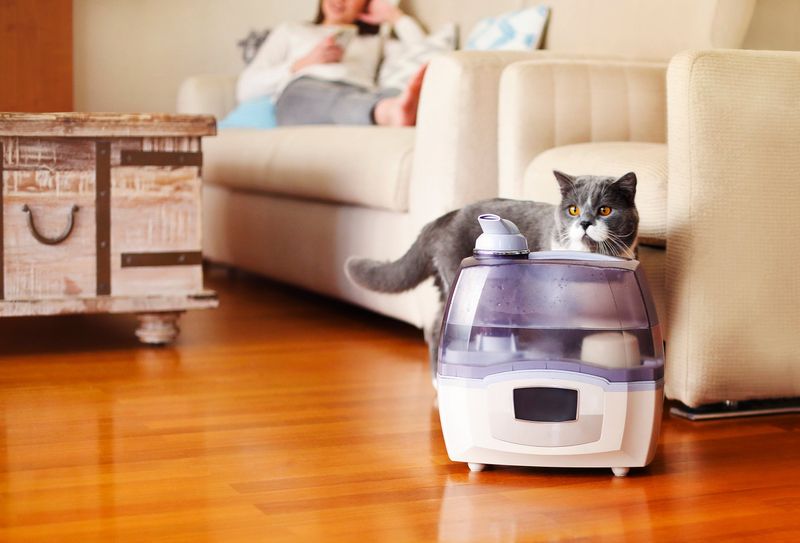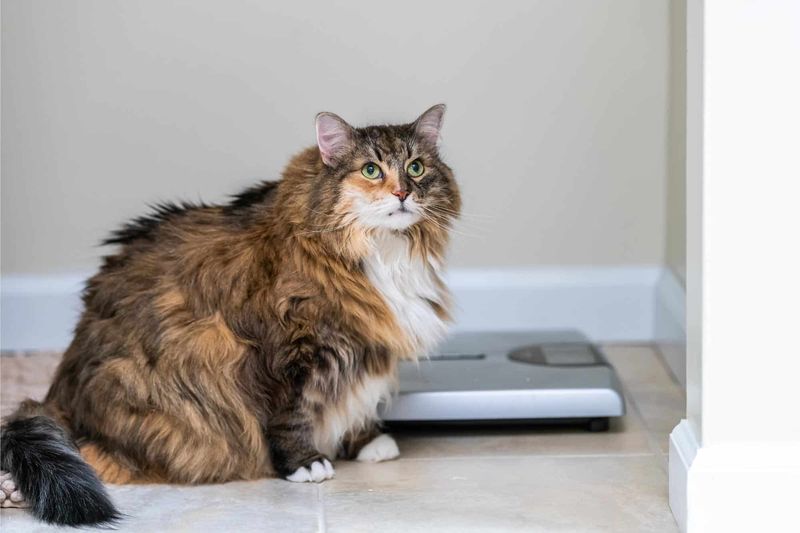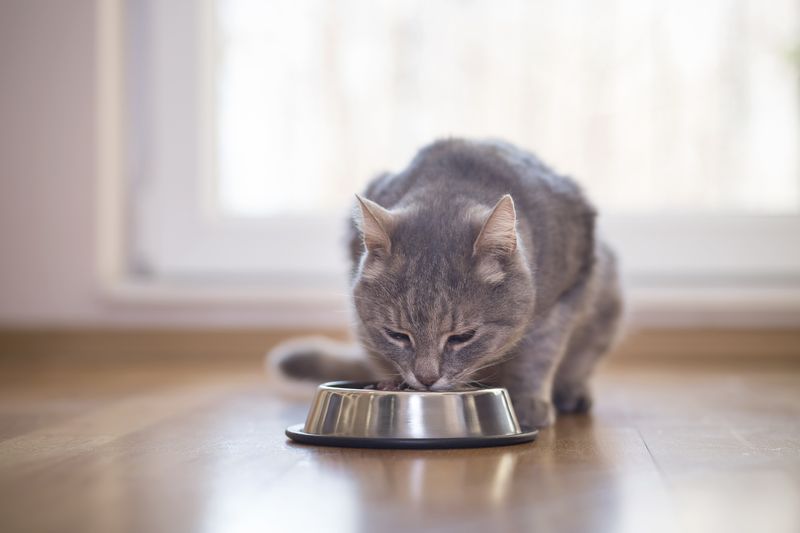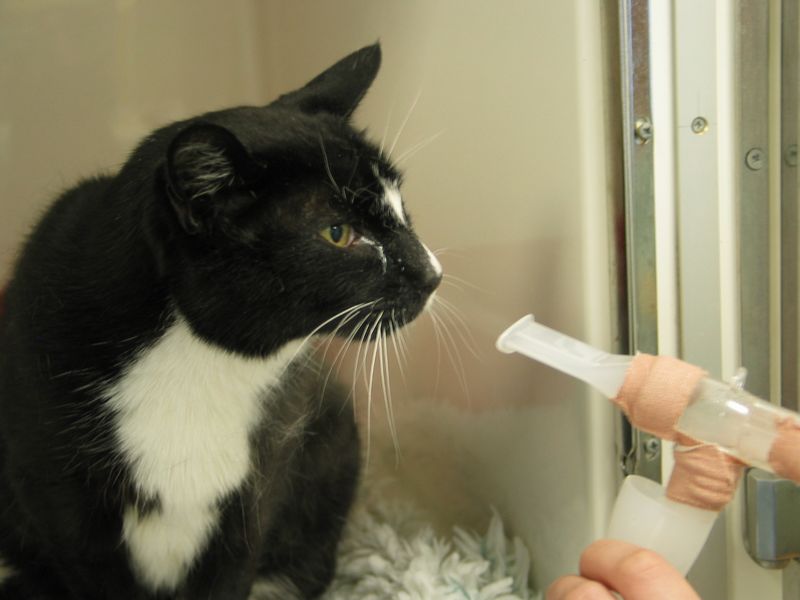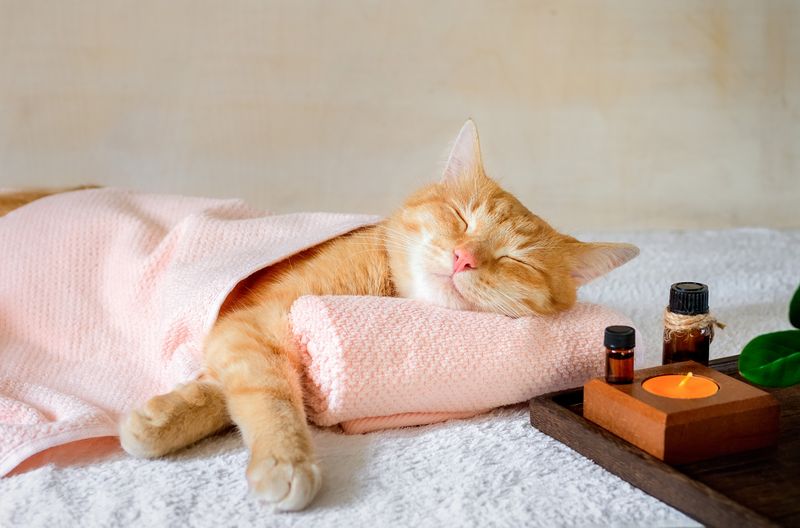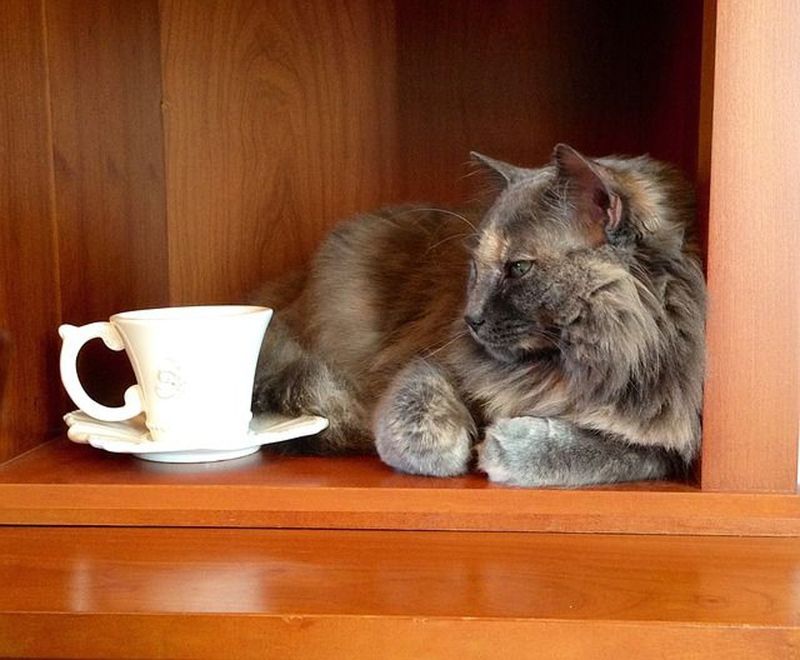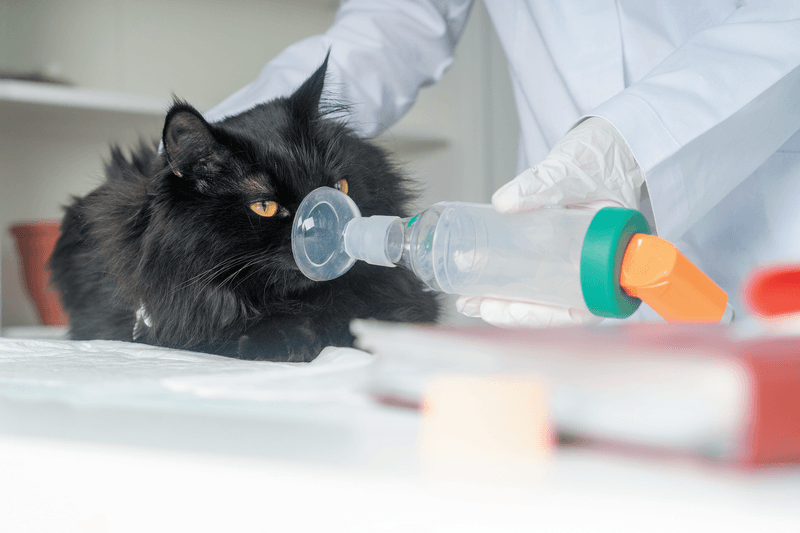📖 Table of Content:
- 1. Use a HEPA Air Purifier
- 2. Reduce Household Allergens
- 3. Switch to a Low-Dust, Unscented Cat Litter
- 4. Provide a Humidifier
- 5. Eliminate Smoke and Strong Scents
- 6. Maintain a Healthy Weight
- 7. Try Omega-3 Fatty Acids
- 8. Herbal Remedies (With Vet Approval)
- 9. Use a Steam Treatment
- 10. Reduce Stress and Anxiety
- 11. Switch to a High-Quality, Hypoallergenic Diet
- 12. Probiotics for Gut and Immune Health
- 13. Cat-Safe Herbal Teas
- 14. Avoid Chemical-Based Pest Control Products
- 15. Regular Vet Check-Ups
Cats, much like humans, can suffer from asthma, a chronic condition that affects their ability to breathe properly. This respiratory issue occurs when the airways become inflamed and narrowed, leading to symptoms such as coughing, wheezing, and labored breathing. While asthma can be a serious condition, it is manageable with the right care and attention. Understanding the triggers and symptoms of feline asthma is the first step in ensuring your cat’s health and well-being.
Veterinary treatment is essential for diagnosing and managing asthma, but there are also natural remedies that can help support your cat’s respiratory health. Environmental factors play a significant role in asthma flare-ups, so minimizing exposure to allergens, dust, and strong odors can make a big difference. Additionally, dietary changes, supplements, and stress reduction techniques may help improve your cat’s breathing. Taking a holistic approach to asthma management can provide relief and improve your cat’s overall quality of life.
If your cat has been diagnosed with asthma or you suspect they may be struggling with breathing difficulties, there are several at-home remedies you can try. From improving air quality to introducing natural anti-inflammatory supplements, these remedies can complement veterinary care and help reduce symptoms. In this guide, we’ll explore some of the most effective home treatments for cat asthma and how you can create a healthier environment for your feline companion.
1. Use a HEPA Air Purifier
Air quality plays a crucial role in managing cat asthma, and a HEPA air purifier can significantly reduce airborne irritants. These purifiers trap tiny particles such as dust, pollen, and pet dander, which are common asthma triggers. By continuously filtering the air, they create a cleaner environment, making it easier for your cat to breathe. Placing the purifier in areas where your cat spends the most time can have a noticeable impact on their respiratory health. Regularly cleaning and replacing the filters is essential to maintain effectiveness. Combined with frequent dusting and vacuuming, an air purifier can minimize airborne allergens in your home. This simple addition can provide long-term relief for an asthmatic cat.
2. Reduce Household Allergens
Keeping your home free from allergens is key to managing asthma in cats. Dust, mold, and pet dander can accumulate quickly and contribute to breathing difficulties. Regularly vacuuming carpets, furniture, and curtains can help eliminate trapped allergens. Using fragrance-free and hypoallergenic cleaning products reduces exposure to harsh chemicals that might irritate your cat’s airways. Washing your cat’s bedding and toys in hot water can further remove dust mites and bacteria. Decluttering the home and reducing fabric-based furnishings can also minimize dust buildup. A clean, allergen-free environment is one of the simplest yet most effective ways to improve your cat’s respiratory health.
3. Switch to a Low-Dust, Unscented Cat Litter
Litter box choices can greatly impact a cat’s asthma symptoms. Many commercial cat litters, especially those made from clay, produce fine dust that can be inhaled, leading to airway irritation. Opting for low-dust alternatives such as paper, wood, or corn-based litter can reduce this risk. Unscented litter is also preferable, as artificial fragrances can trigger asthma flare-ups. Regularly scooping the litter box prevents bacterial growth, which can further contribute to respiratory issues. Placing the litter box in a well-ventilated area can help disperse any lingering dust. A small change in litter selection can make a big difference in an asthmatic cat’s daily comfort.
4. Provide a Humidifier
Moist air can help alleviate asthma symptoms by preventing airway dryness. A humidifier adds moisture to the air, reducing irritation in the respiratory tract. Dry environments, particularly during winter or in air-conditioned spaces, can worsen asthma symptoms. Placing a humidifier in your cat’s favorite resting areas can make breathing easier and more comfortable. Ensuring that the device is regularly cleaned prevents mold and bacteria buildup, which could otherwise worsen the condition. Aiming for an indoor humidity level of around 40-50% is ideal for respiratory health. By maintaining proper air moisture levels, a humidifier can help soothe inflamed airways and support easier breathing.
5. Eliminate Smoke and Strong Scents
Airborne pollutants like smoke and artificial fragrances can be severe triggers for cat asthma. Avoiding smoking indoors is crucial, as cigarette smoke can linger in furniture, carpets, and even your cat’s fur. Scented candles, incense, and aerosol sprays contain chemicals that may irritate a cat’s sensitive lungs. Using natural, fragrance-free household products can significantly reduce airborne irritants. Opening windows and allowing fresh air circulation can also help clear out lingering odors and pollutants. If air fresheners are needed, opting for natural alternatives like baking soda or activated charcoal is a safer choice. Removing these potential irritants can prevent unnecessary asthma flare-ups in cats.
6. Maintain a Healthy Weight
Obesity can worsen asthma by putting extra pressure on a cat’s lungs, making breathing more difficult. A well-balanced diet, rich in high-quality protein and low in unnecessary fillers, is essential for maintaining a healthy weight. Encouraging regular exercise through interactive play can also help prevent weight gain while keeping your cat active. Overfeeding or providing excessive treats should be avoided, as excess weight can make asthma symptoms more severe. Feeding portion-controlled meals and consulting a vet for dietary recommendations can ensure proper nutrition. Obese cats may also struggle with inflammation, which can further contribute to airway issues. Keeping your cat fit and at an ideal weight supports overall respiratory health and reduces the frequency of asthma attacks.
7. Try Omega-3 Fatty Acids
Natural anti-inflammatory properties make omega-3 fatty acids a beneficial supplement for asthmatic cats. Found in fish oil, these fatty acids help reduce inflammation in the lungs and improve respiratory function. Adding a small amount of fish oil to your cat’s food can provide long-term health benefits. It is important to choose a high-quality supplement specifically designed for pets to ensure safety and effectiveness. Consulting your vet about the right dosage is recommended, as excessive amounts may cause digestive issues. Some commercial cat foods already contain omega-3s, but supplementation can offer additional support. With regular use, omega-3s may help minimize asthma symptoms and improve overall lung function.
8. Herbal Remedies (With Vet Approval)
Natural herbs such as licorice root, boswellia, and marshmallow root have been used to support respiratory health. Licorice root is known for its anti-inflammatory and soothing properties, which may help reduce airway irritation. Boswellia has been studied for its ability to lower inflammation, potentially easing asthma symptoms. Marshmallow root acts as a natural expectorant, helping to clear mucus from the airways. While these herbs can be beneficial, it is essential to consult a veterinarian before introducing any new supplements. Incorrect dosages or certain herb interactions can lead to unwanted side effects. When used correctly, herbal remedies may provide additional relief for asthmatic cats.
9. Use a Steam Treatment
Steam inhalation can help loosen mucus and open up the airways in asthmatic cats. Running a hot shower and allowing your cat to sit in the bathroom (without getting wet) creates a humid environment that can ease breathing difficulties. The warmth and moisture help break down mucus buildup in the lungs, reducing coughing and wheezing. It is important to supervise your cat during this process to ensure they feel comfortable. Sessions should be kept brief, around 10-15 minutes, to prevent overheating. This method is particularly useful during asthma flare-ups when immediate relief is needed. Regular steam treatments can help maintain clear airways and improve respiratory function.
10. Reduce Stress and Anxiety
Chronic stress can contribute to asthma flare-ups by triggering an inflammatory response. Creating a calm and predictable environment helps reduce anxiety in cats. Providing safe hiding spots, cozy bedding, and interactive toys can encourage relaxation. Using pheromone diffusers or sprays may also help create a soothing atmosphere. Cats thrive on routine, so maintaining consistent feeding times and minimizing sudden changes in their environment is beneficial. Loud noises and household disruptions should be kept to a minimum to prevent stress-induced asthma symptoms. A peaceful home environment can significantly improve an asthmatic cat’s overall well-being.
11. Switch to a High-Quality, Hypoallergenic Diet
Diet can play a significant role in managing asthma, especially if food allergies contribute to respiratory issues. Many commercial cat foods contain fillers, artificial additives, and common allergens such as grains or poultry, which can trigger inflammation. Switching to a high-quality, hypoallergenic diet with novel proteins like duck, venison, or rabbit may help reduce asthma flare-ups. Grain-free or limited-ingredient diets are also worth considering if your cat has food sensitivities. Consulting your vet to determine the best food for your cat’s needs is always a good idea. Gradually transitioning to a new diet helps prevent digestive upset while allowing you to monitor any improvements in asthma symptoms. Providing a balanced and nutritious diet can strengthen your cat’s immune system and overall respiratory health.
12. Probiotics for Gut and Immune Health
A healthy gut supports a strong immune system, which can help reduce asthma-related inflammation. Probiotics introduce beneficial bacteria that aid digestion, improve nutrient absorption, and help balance immune responses. Some research suggests that a well-balanced gut microbiome can decrease inflammatory reactions that contribute to respiratory conditions. Probiotics are available in powder, capsule, or chewable forms and can be easily mixed into your cat’s food. Choosing a veterinary-recommended probiotic ensures that your cat receives high-quality, effective strains. Regular use may not only benefit asthma symptoms but also improve overall digestion and skin health. Strengthening your cat’s gut health can be a natural way to support long-term respiratory function.
13. Cat-Safe Herbal Teas
Alternative therapies such as acupuncture and chiropractic care are gaining popularity for feline asthma treatment. Acupuncture involves inserting tiny needles into specific points on the body to stimulate healing and reduce inflammation. Some cats respond well to this treatment, showing improvements in breathing and overall relaxation. Chiropractic care, which focuses on spinal alignment, may also help relieve tension that affects respiratory function. These treatments should only be performed by certified professionals who specialize in veterinary acupuncture or chiropractic therapy. While results can vary, many pet owners have reported noticeable improvements in their cat’s asthma symptoms. Exploring holistic options can be a valuable addition to a comprehensive asthma management plan.
14. Avoid Chemical-Based Pest Control Products
Many household pest control products contain toxic chemicals that can irritate a cat’s airways and trigger asthma attacks. Flea sprays, insecticides, and chemical-laden shampoos release fumes that may linger in the home environment. Opting for natural flea prevention methods, such as diatomaceous earth, essential oil-based repellents (vet-approved), or regular grooming, can help keep pests at bay without harmful side effects. Using flea combs and washing pet bedding frequently can further reduce flea infestations. If chemical treatments are necessary, ensuring proper ventilation and keeping your cat away from treated areas can minimize exposure. Choosing safer alternatives for pest control helps create a healthier living space for an asthmatic cat.
15. Regular Vet Check-Ups
Routine veterinary visits are crucial for monitoring and managing feline asthma. Regular check-ups allow vets to assess your cat’s lung function, adjust treatments if necessary, and catch any worsening symptoms early. Diagnostic tools like X-rays and respiratory tests can provide insight into the severity of the condition. A veterinarian may recommend inhalers, bronchodilators, or corticosteroids to help manage asthma more effectively. Even if your cat appears to be doing well, periodic vet visits ensure that their condition remains stable. Discussing any changes in symptoms or new treatments with your vet can help you fine-tune your cat’s care plan. With proper medical oversight, natural remedies can work alongside traditional treatments to improve your cat’s quality of life.
